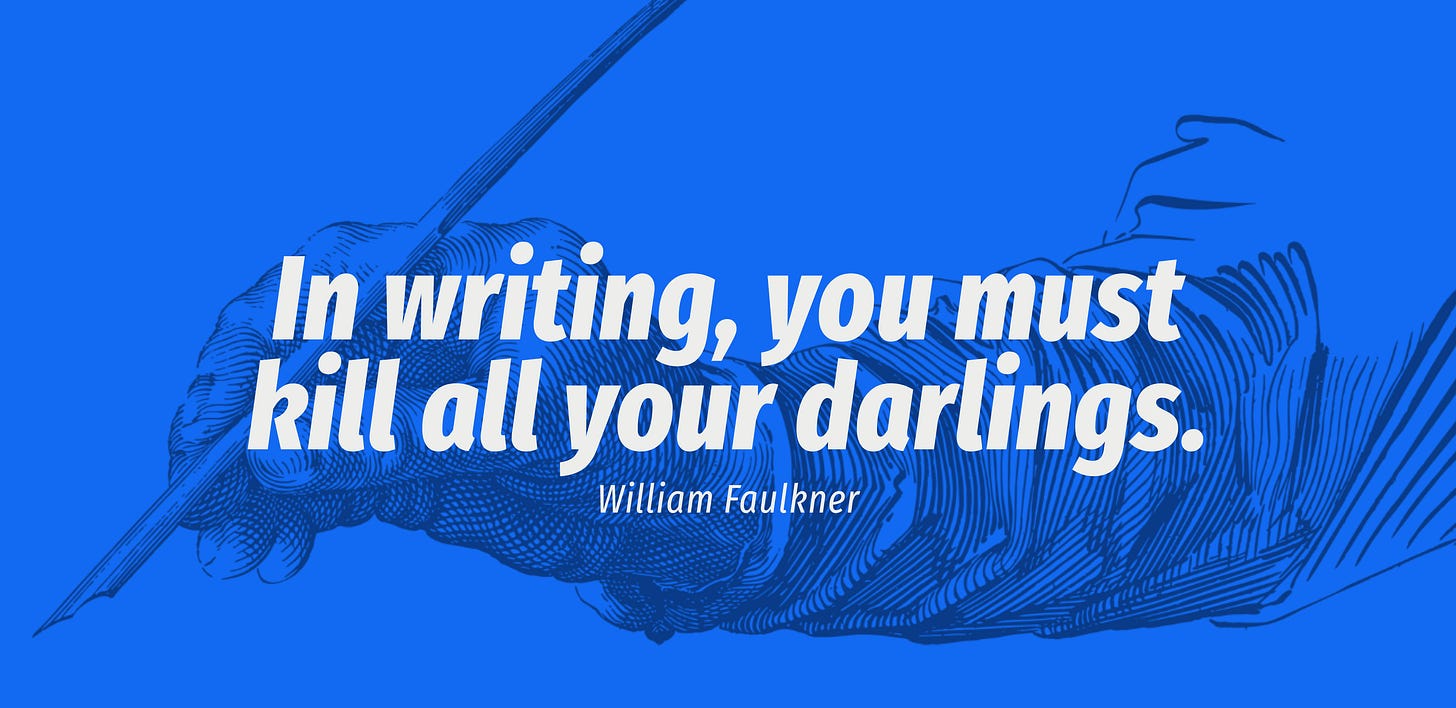Your Portfolio Isn't a Graveyard: Why You Should Kill Your Darlings
Rethinking Your Portfolio Strategy
As a creative, your portfolio isn’t just a folder of old work - it’s your Bat-Signal, your golden ticket, your personal episode of Project Runway where you show the world you’re “in” and not “out.” But let’s get real: too many creatives treat their portfolio like a retirement home for projects, where every piece, no matter how ancient or cringe-worthy, gets a spot to kick back and chill. Newsflash: your portfolio doesn’t need zombies from your high school design days roaming around. A cluttered, out-of-date portfolio doesn’t just confuse people; it muddies your vibe and makes it harder to see the rockstar work you’re capable of today.
Here's why you should be ruthless about "killing your darlings" and curating a strong, focused portfolio:
Quality Over Quantity
When it comes to your portfolio, channel your inner Marie Kondo: if a project doesn’t spark joy (or show off your A-game), thank it for its service and let it go. Prospective clients and employers aren’t binge-watching your portfolio like it’s Stranger Things—they’re looking for a quick, mind-blowing highlight reel, not a season-by-season recap of your creative journey.
Overloading your portfolio with every project you’ve ever touched (including that so-so flyer from 2015) is like adding pineapple to pizza: it’s a bold move, but not everyone’s a fan. A tight collection of top-tier work will hit harder than a portfolio stuffed with mediocrity. So be picky—only show off the pieces that make people say, “Whoa, this person gets it.”
Last year, Sumit, our team's Head of Marketing, had an inspiring conversation with Heiko Freyland, one of Germany's most awarded freelancers. He’s a creative with over 350 national and international awards (One Show, D&AD, Cannes, CLIO, LIA, Eurobest, and many more). He’s ranked as the world’s seventh-best copywriter (The Big Won) and is a member of both D&AD and ADC Germany, where he’s served as a jury member several times.
Heiko shared some advice that really stuck with us: he said he’d rather see imaginative branding concepts or campaign ideas in a portfolio than a few mediocre or half-hearted projects. Sumit brought up how valuable this perspective is, especially for newcomers who might not have much real-world work to show. Instead of padding portfolios with outdated pieces, Heiko’s advice is to go bold - even if it means to create hypothetical projects that showcase your skills and creativity. It’s not about how much you have; it’s about how much impact you can make.





